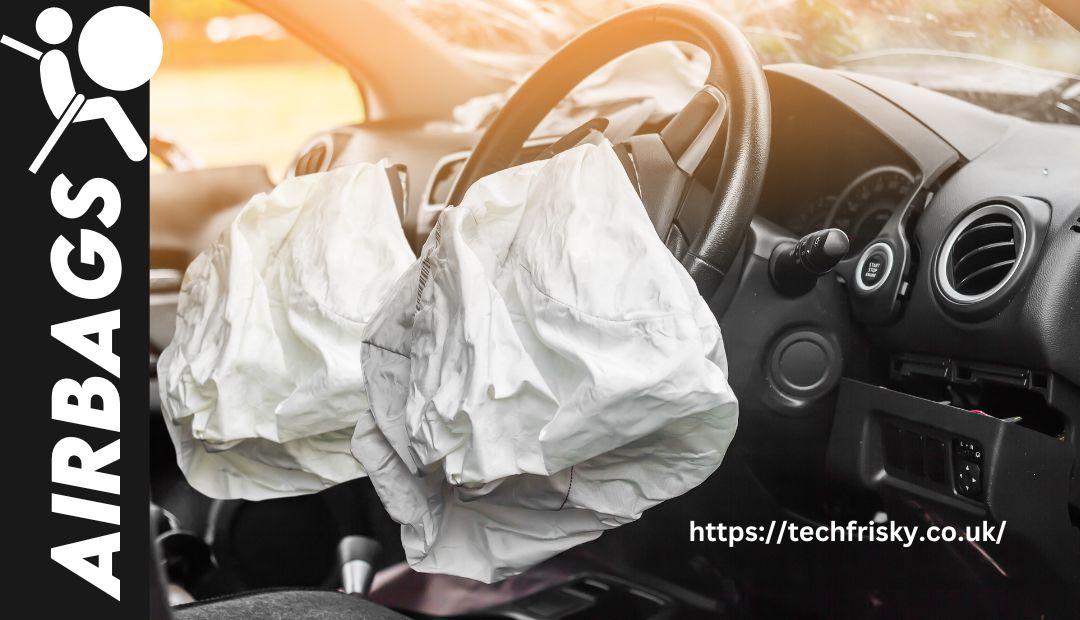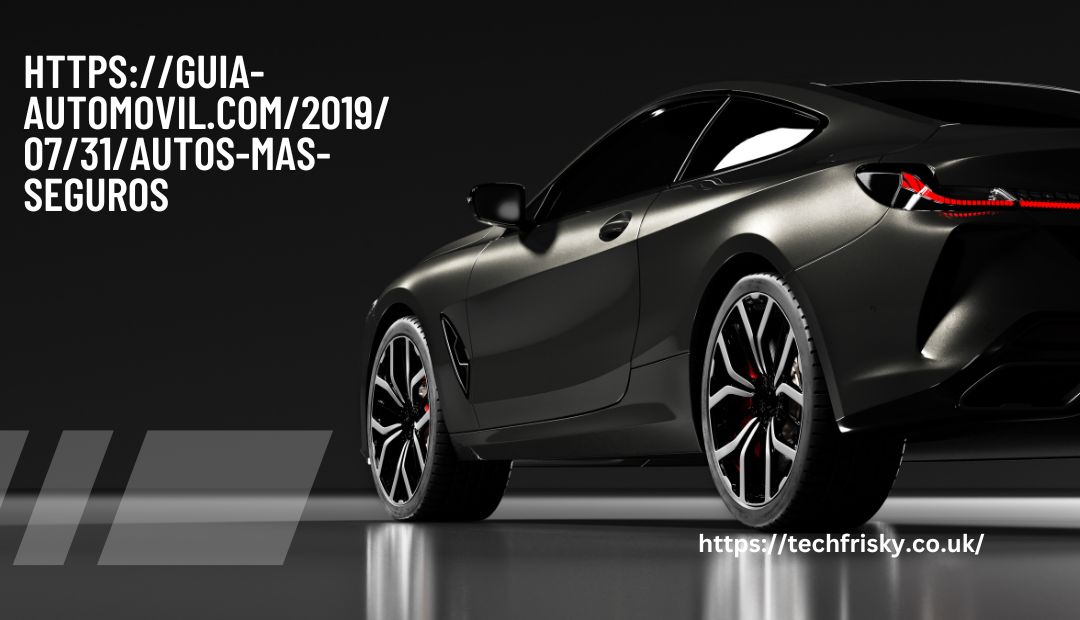https://guia-automovil.com/2019/07/31/autos-mas-seguros the fast-paced world of automotive innovation, safety has become a top priority for both manufacturers and consumers. With so many options on the market, choosing a vehicle that prioritizes your well-being can feel overwhelming. From advanced technology to robust design features, today’s cars are equipped with an array of safety measures designed to protect you and your loved ones. In this guide, we’ll explore some of the safest cars available today, highlighting their standout features and what makes them worthy contenders in the realm of automotive security. Buckle up as we delve into the essentials that could make all the difference on the road.
Top Safety Features in https://guia-automovil.com/2019/07/31/autos-mas-seguros Vehicles
https://guia-automovil.com/2019/07/31/autos-mas-seguros vehicles are equipped with an array of safety features designed to protect both drivers and passengers. One of the most significant advancements is the integration of Advanced Driver Assistance Systems (ADAS). These systems utilize cameras, sensors, and radar to monitor surroundings and provide alerts for potential hazards.
The Safest Cars on the Market
When it comes to finding the safest cars on the market, several models consistently stand out. These vehicles not only meet but often exceed industry safety standards, providing peace of mind for drivers and passengers alike. With rigorous testing from organizations like the IIHS and NHTSA, it’s easier than ever to identify which cars offer superior protection.
Safety features
Manufacturers are increasingly integrating advanced technology into their designs, enhancing overall safety features. From collision avoidance systems to adaptive cruise control, modern vehicles are built with your safety in mind. The advancements in engineering allow these cars to respond quickly in critical situations.
Innovative designs and materials
https://guia-automovil.com/2019/07/31/autos-mas-seguros many automakers have made a commitment to prioritize passenger safety through innovative designs and materials. By investing heavily in research and development, they continue to raise the bar for what consumers can expect from a safe driving experience.
Passenger protection during collisions
Another crucial aspect is crashworthiness. Manufacturers invest heavily in designing vehicles that can absorb impact forces effectively. Crumple zones, reinforced structures, and energy-absorbing materials contribute significantly to enhancing passenger protection during collisions.

Airbags
https://guia-automovil.com/2019/07/31/autos-mas-seguros additionally, airbags have evolved beyond traditional front-impact deployment. Side-curtain airbags and knee airbags offer added protection in various accident scenarios. Restraint systems work hand-in-hand with these features to ensure occupants remain secure during sudden stops or crashes.
Advanced Driver Assistance Systems (ADAS)
The use of Advanced Driver Assistance Systems (ADAS) is transforming car safety. These technologies help drivers navigate complex environments while minimizing risks. Features like adaptive cruise control and lane-keeping assist are designed to enhance driving comfort and reduce accidents.
Sensors and cameras
https://guia-automovil.com/2019/07/31/autos-mas-seguros is the most notable aspects of ADAS is its ability to monitor surroundings in real time. Sensors and cameras work together, providing alerts about potential hazards, such as pedestrians or other vehicles. This proactive approach promotes safer decision-making on the road.Moreover, many automakers integrate these systems seamlessly into their designs. As a result, drivers can enjoy enhanced safety without sacrificing style or performance. ADAS represents a significant leap toward making our roads safer for everyone involved.
Crashworthiness and Crash Avoidance
Crashworthiness refers to how well a vehicle protects its occupants in the event of an accident. https://guia-automovil.com/2019/07/31/autos-mas-seguro involves rigorous testing and engineering to ensure that the structure can absorb impact forces effectively. Features like crumple zones, reinforced frames, and energy-absorbing materials play a crucial role in enhancing crashworthiness.
Crash avoidance focuses on technologies designed
On the other hand, crash avoidance focuses on technologies designed to prevent accidents before they occur. Advanced sensors, cameras, and radar systems are integrated into vehicles to monitor surroundings continuously. These systems can alert drivers or even take action autonomously if a potential collision is detected.
Airbags and Restraint Systems
https://guia-automovil.com/2019/07/31/autos-mas-seguros airbags and restraint systems play a critical role in enhancing vehicle safety. These features are designed to protect occupants during collisions, significantly reducing the risk of severe injury. Modern vehicles come equipped with multiple airbags, including front, side, curtain, and knee airbags.
Airbag deployment
Restraint systems like seat belts work hand-in-hand with airbags. They help keep passengers securely in place during an accident, ensuring that they remain positioned correctly for airbag deployment. The combination of these technologies creates a robust safety net for all occupants.
Pretensioners tighten seat belts
Innovations continue to emerge in this area as manufacturers strive to improve effectiveness. Features such as pretensioners tighten seat belts upon impact while new airbag designs aim for better coverage and protection zones within the cabin space. Safety is evolving rapidly with each model year.
Volvo XC90: A Leader in Safety
https://guia-automovil.com/2019/07/31/autos-mas-seguros Volvo XC90 stands out as a benchmark in automotive safety. Renowned for its robust construction and innovative design, this luxury SUV prioritizes the well-being of everyone on board. It combines style with substance, ensuring that drivers and passengers feel secure during every journey.
XC90 showcases technologies
Equipped with an array of advanced safety features, the XC90 showcases technologies like automatic emergency braking and lane-keeping assist. These systems work seamlessly to prevent accidents before they occur. Additionally, its crash-test ratings consistently rank among the highest in its class.
Comfort to Volvo bus
Volvo’s commitment to safety extends beyond technology; it reflects a philosophy ingrained in the brand’s identity. The XC90 exemplifies how luxurious driving can coexist with top-tier protection measures—making it an ideal choice for families who value both comfort and security while on the road.
Evaluating Vehicle Safety
https://guia-automovil.com/2019/07/31/autos-mas-seguros evaluating vehicle safety, it’s essential to consider various factors beyond just crash test ratings. Start by examining the car’s safety features and technology. Advanced systems can significantly enhance a driver’s ability to avoid accidents.
Companies prioritize
Another critical aspect is the brand’s commitment to safety over time. Researching manufacturer history reveals which companies prioritize innovative designs aimed at protecting occupants during collisions. This insight often leads consumers toward brands known for their reliability in safeguarding lives.
Prioritizing safety
Personal experiences play an important role in understanding vehicle safety. Reviews from other drivers provide real-world insights that statistics may not cover fully. By gathering comprehensive information, potential buyers can make informed decisions about their next vehicle purchase while prioritizing safety above all else.
Future Trends in Vehicle Safety
https://guia-automovil.com/2019/07/31/autos-mas-seguros vehicle safety continues to evolve, several exciting trends are on the horizon. Advances in technology play a crucial role in shaping how manufacturers approach safety features. One significant trend is the integration of artificial intelligence (AI) into vehicles. By analyzing traffic patterns and environmental factors, artificial intelligence (AI) enables real-time modifications to enhance driver awareness and vehicle responsiveness.
Infrastructure systems
Another important development is the move towards connected cars. These vehicles communicate with each other and infrastructure systems to share vital information about road conditions, traffic signals, and potential hazards. This connectivity could significantly reduce accidents by providing drivers with timely alerts.
Conclusion
https://guia-automovil.com/2019/07/31/autos-mas-seguros electric vehicles are also leading innovations in safety design. With a focus on lightweight materials and improved structural integrity, these cars often come equipped with enhanced crumple zones that absorb impact more effectively during collisions. The push for autonomous driving technology promises to redefine safety standards entirely. Self-driving cars aim to eliminate human error—one of the leading causes of accidents—by relying on sophisticated sensors and algorithms for navigation.
